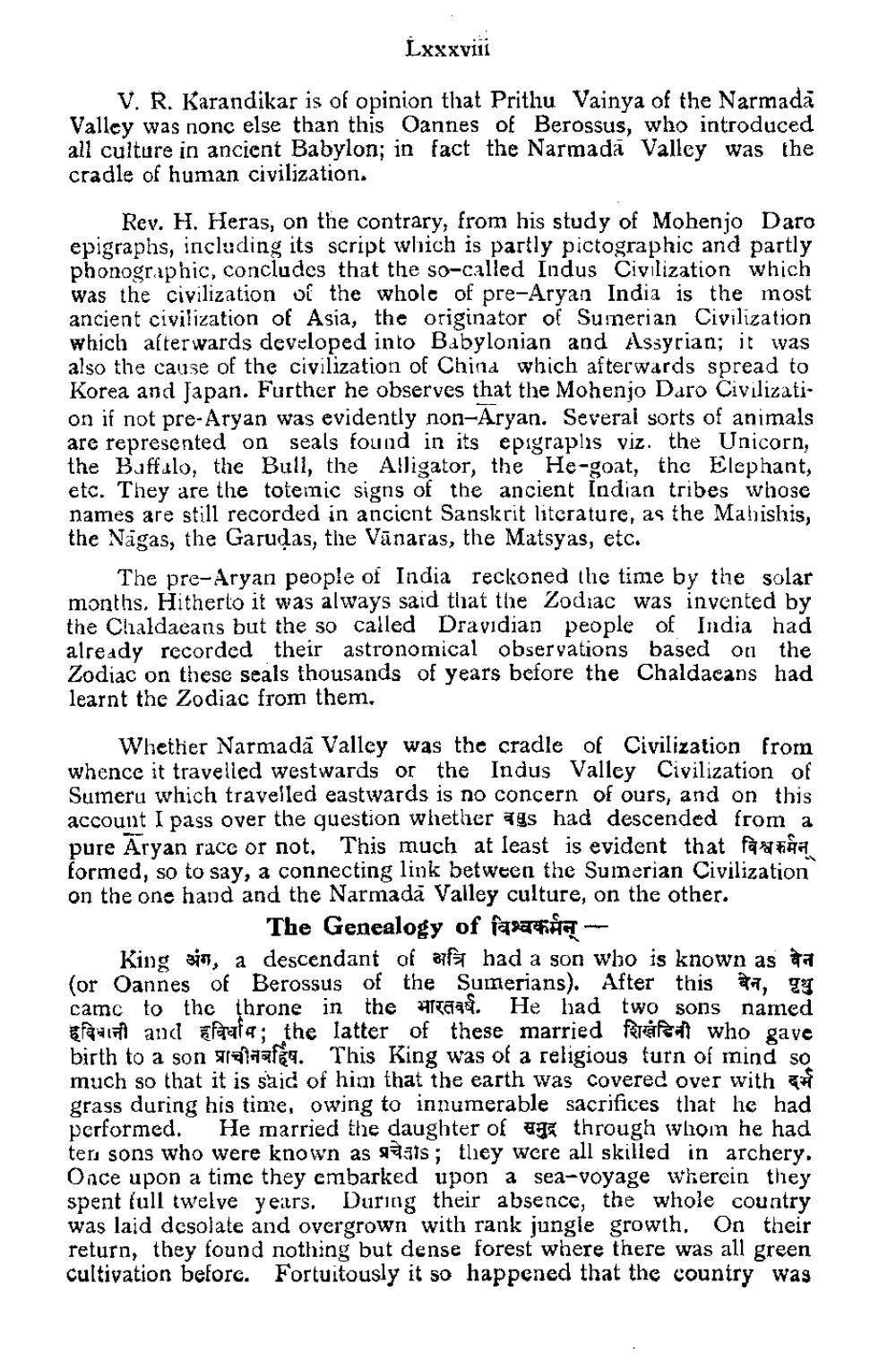________________
Lxxxviii
V. R. Karandikar is of opinion that Prithu Vainya of the Narmada Valley was none else than this Oannes of Berossus, who introduced all culture in ancient Babylon; in fact the Narmada Valley was the cradle of human civilization.
Rev. H. Heras, on the contrary, from his study of Mohenjo Daro epigraphs, including its script which is partly pictographic and partly phonographic, concludes that the so-called Indus Civilization which was the civilization of the whole of pre-Aryan India is the most ancient civilization of Asia, the originator of Suinerian Civilization which afterwards developed into Babylonian and Assyrian; it was also the cause of the civilization of China which afterwards spread to Korea and Japan. Further he observes that the Mohenjo Daro Civilization if not pre-Aryan was evidently non-Aryan. Several sorts of animals are represented on seals found in its epigraplis viz. the Unicorn, the Buffalo, the Bull, the Aligator, the He-goat, thc Elephant, etc. They are the totemic signs of the ancient Indian tribes whose names are still recorded in ancient Sanskrit literature, as the Mabishis, the Nāgas, the Garudas, tie Vānaras, the Matsyas, etc.
The pre-Aryan people of India reckoned the time by the solar months. Hitherto it was always said tiiat the Zodiac was invented by the Chaldaeans but the so called Dravidian people of India had already recorded their astronomical observations based on the Zodiac on these seals thousands of years before the Chaldacans had learnt the Zodiac from them,
Whethier Narmadā Valley was the cradle of Civilization from whence it travelled westwards or the Indus Valley Civilization of Sumeru which travelled eastwards is no concern of ours, and on this account I pass over the question whether ags had descended from a pure Aryan racc or not This much at least is evident that fara formed, so to say, a connecting link between the Sumerian Civilization on the one hand and the Narmadā Valley culture, on the other.
The Genealogy of विश्वकर्मन् - King zio, a descendant of of had a son who is known as a (or Oannes of Berossus of the Sumerians). After this , qe camc to the throne in the rai. He had two sons named इविधानी and हविर्धाम; the latter of these married शिखटिनी who gave birth to a son palaafer. This King was of a religious turn of mind so much so that it is said of him that the earth was covered over with grass during his time, owing to innumerable sacrifices that he had performed. He married the daughter of us through whoin he had ter sons who were known as saats; they were all skilled in archery. Once upon a time they embarked upon a sea-voyage wherein they spent full twelve years. During their absence, the whole country was laid desolate and overgrown with rank jungle growth, On their return, they found nothing but dense forest where there was all green cultivation before. Fortuitously it so happened that the country was




